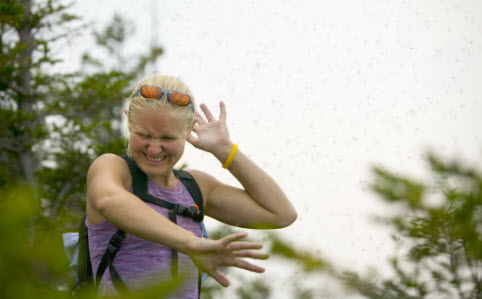When it comes to outdoor pests, mosquitoes have long been the reigning villain. However, a new adversary has emerged, often unseen but leaving behind itchy misery: noseeums. These tiny, almost invisible insects are making their presence felt in many regions, inflicting irritating bites and spoiling outdoor activities. In this article, we delve into the world of noseeums, exploring why they have become the new outdoor menace and offering insights into how to protect yourself from these bothersome pests.
Understanding Noseeums
Noseeums, also known as biting midges or sandflies, are small insects belonging to the Ceratopogonidae family. Measuring only 1 to 3 millimeters in length, they are so tiny that they can easily slip through screens and mesh. Unlike mosquitoes, noseeums are not easily spotted, making them all the more frustrating for their victims.
Behavior and Bites
Noseeums are most active during dawn and dusk, preferring moist environments such as marshes, swamps, and coastal areas. These relentless biters are attracted to body heat, carbon dioxide, and certain scents emitted by humans and animals.
Noseeum bites are often described as intensely itchy, resulting in red welts or small, raised bumps on the skin. The aftermath of a noseeum attack can be a maddening cycle of scratching and discomfort, sometimes lasting for days. Their bites can be particularly bothersome for individuals with sensitive skin or those prone to allergic reactions.
Why Noseeums Are Gaining Notoriety
- Stealthy Nature: Noseeums live up to their name by being difficult to spot. Their ability to go undetected until after they’ve bitten their victims adds to their notoriety.
- Geographic Expansion: While mosquitoes are prevalent in many parts of the world, noseeums are becoming increasingly widespread. Their range extends beyond tropical regions, and they have been reported in various climates, including coastal areas, forests, and even suburban backyards.
- Multiple Biting Sites: Unlike mosquitoes that typically target exposed areas, noseeums can bite through clothing, leading to bites on covered skin as well. This makes it challenging to defend against their attacks.
- Persistence: Noseeums have a reputation for their persistence in pursuing their prey. Even a brief moment of outdoor relaxation can quickly turn into a frustrating encounter with these tiny assailants.
Protecting Yourself from Noseeums
Fortunately, there are several measures you can take to safeguard yourself against noseeums:
- Use Insect Repellent: Apply an effective insect repellent containing ingredients like DEET or picaridin to exposed skin and clothing. Reapply as directed, especially if you are in a particularly infested area.
- Wear Protective Clothing: Covering your skin with long-sleeved shirts, long pants, and socks can provide a physical barrier against noseeum bites. Opt for light-colored clothing, as noseeums are attracted to dark colors.
- Utilize Netting and Screens: When spending time in outdoor areas prone to noseeums, consider using mosquito netting or screens to create a protective barrier around yourself, especially during peak biting times.
- Eliminate Breeding Sites: Reduce standing water sources near your property, as these serve as breeding grounds for noseeums. Empty containers, clean gutters, and ensure proper drainage to discourage their proliferation.
- Seek Shelter during Peak Activity: If noseeums are particularly bothersome in your area, try to limit outdoor activities during dawn and dusk when they are most active. Instead, plan your outings during midday when their presence is typically minimal.

